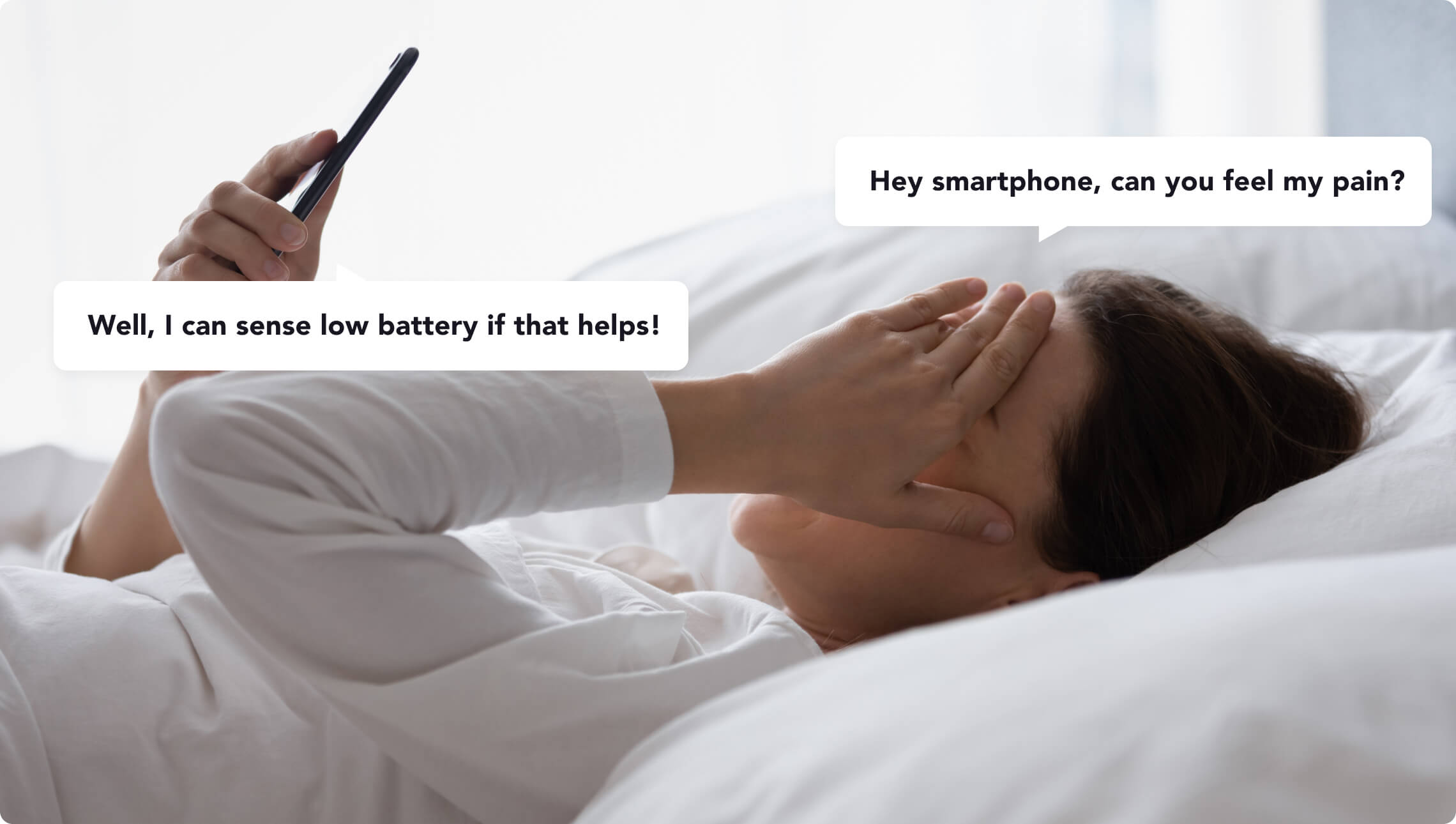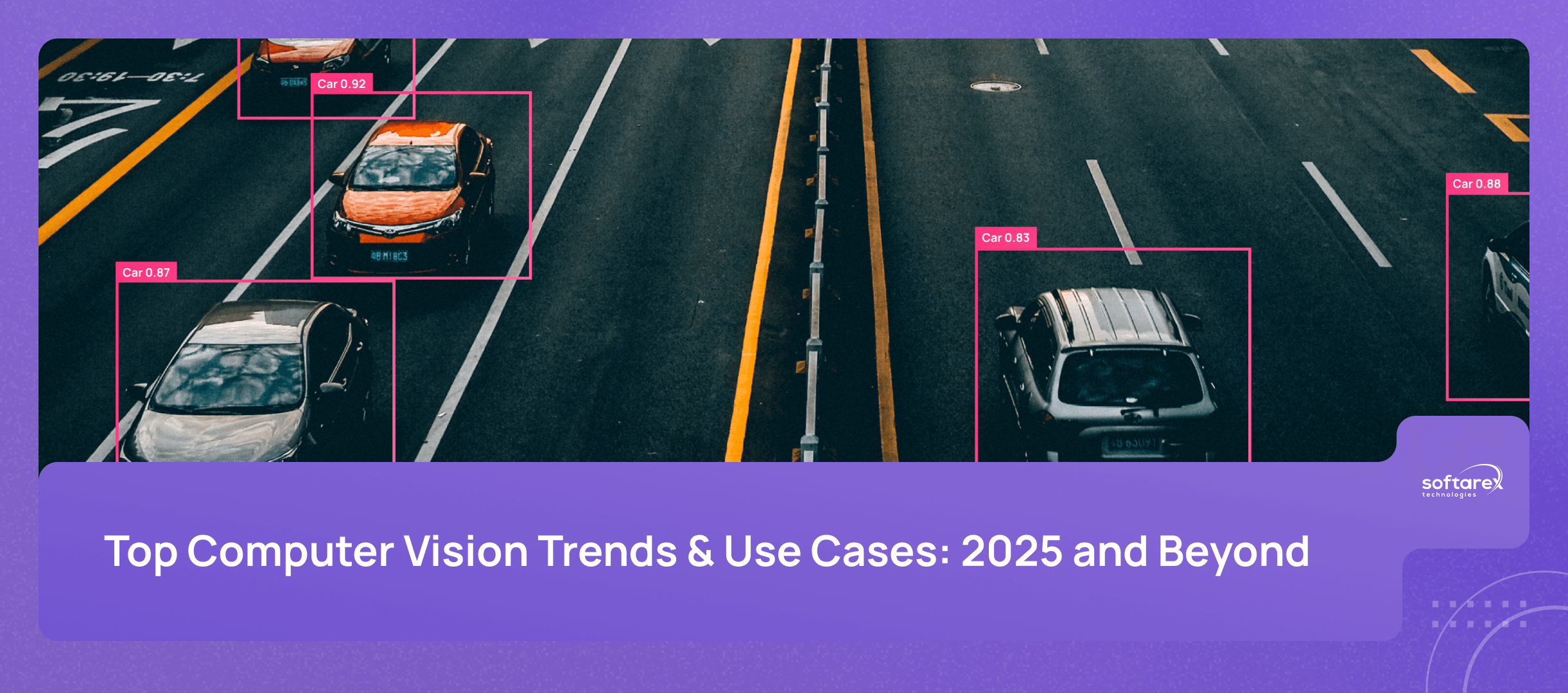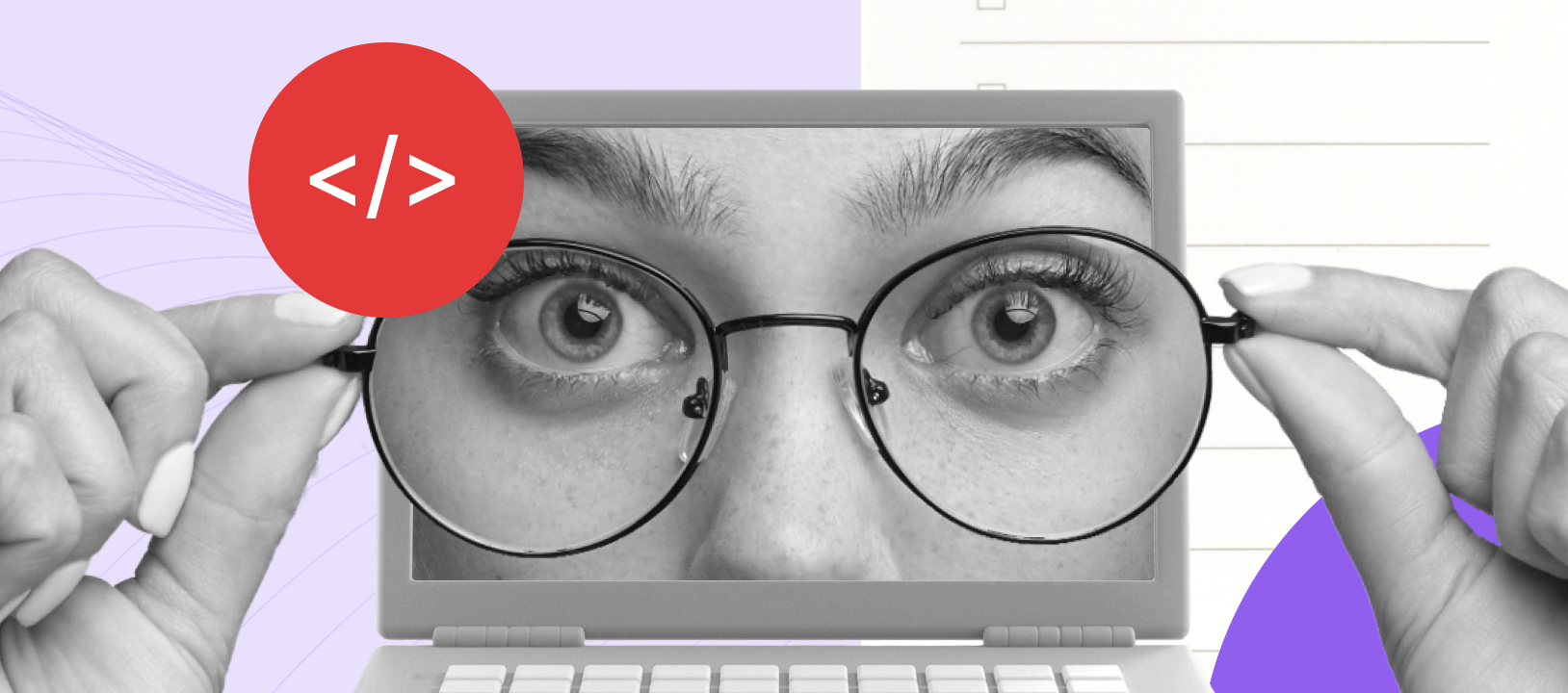- Connecting AI with Smartphone Applications for Healthcare Market Growth
- Smartphone Sensors for Healthcare
- Smartphone Sensor Data and AI-Enabled Diagnostic Assistance
- Healthcare Monitoring and Disease Management
- Wellness Applications and Beyond
- Overcoming Challenges and Ensuring Trust
- Embrace the Opportunities Presented by AI
Connecting AI with Smartphone Applications for Healthcare Market Growth
The rapid advancements in AI technology have propelled smartphones beyond their traditional roles, transforming them into intelligent devices that can analyze vast amounts of data, recognize patterns, and provide actionable insights. This convergence of AI and smartphones holds immense potential to address some of the biggest challenges in healthcare, including early disease detection, personalized patient care, and promoting overall well-being.
Research statistics and up-to-date evidence further support the growing significance of AI-enabled smartphone applications in healthcare. According to a report published by IQVIA Institute for Human Data Science, over 318,000 mobile health applications are currently available, with a substantial portion leveraging AI algorithms to enhance their functionality. Remarkably, it is estimated that more than 200 healthcare-related apps are being added each day, demonstrating the rapid growth and adoption of these technologies. Additionally, research by Grand View Research estimates that the global health app market is expected to reach an impressive US $105.9 billion by 2030. Furthermore, according to Accenture analysis, the combined impact of key clinical health AI applications has the potential to create $150 billion in annual savings for the US healthcare economy by 2026. These figures highlight not only the transformative power of AI in healthcare but also the tangible economic benefits that can be achieved through its implementation.
Smartphone Sensors for Healthcare
In the healthcare domain, smartphones have emerged as powerful tools due to their embedded sensors that can capture a wide array of real-time data. These built-in components are designed to detect events or changes in the smartphone’s environment, and then convert them into signals that applications can read as data and interpret for specific uses. These sensors, originally designed for general-purpose functionalities, have now found new applications in the field of healthcare, bringing about a transformative impact on diagnostics and patient monitoring.
By transmitting data to the phone’s computer, these embedded sensors not only affect the native device but also provide information that can recombine with other information systems and technologies. This interaction can involve wearable consumer devices, medical devices, health records, APIs, aggregators, predictive algorithms, and AI technologies, supporting the seamless integration of multiple data sources to improve healthcare outcomes.
The essential sensors
- Camera / CMOS Image Sensor. With their high-resolution capabilities, smartphones’ cameras serve as powerful tools for capturing visual data, allowing for applications such as dermatology analysis, wound monitoring, and even basic ophthalmological assessments. For instance, the smartphone camera, coupled with a built-in image recognition sensor, can be used to diagnose the health of the retina. When combined with a high-precision microscope, the smartphone camera facilitates the acquisition of high-quality images that can be compared with standard images of affected skin areas, supporting preliminary diagnoses. By incorporating software and other sensors like the internal gyroscope, the camera extends its capabilities to estimate length, angle, slope, level, height, and width. Leveraging sophisticated computer vision algorithms, these images can undergo analysis to detect anomalies, track progress, and provide invaluable assistance in diagnosing specific conditions.
- Accelerometers and Gyroscopes. These sensors detect motion and orientation changes of the smartphone. In healthcare applications, they are utilized to monitor physical activities, gait analysis, and posture assessment. By tracking movements and identifying patterns, these sensors provide valuable insights for rehabilitation, sports medicine, and chronic disease management.
- Microphones (sound sensors). The built-in microphones in smartphones enable audio data capture, which has applications in telemedicine, voice analysis, and even respiratory monitoring. By analyzing sound patterns and frequencies (for example, breathing and cough events), these sensors can aid in identifying certain health conditions, such as sleep apnea or respiratory disorders. They prove instrumental in assessing pulmonary health while simultaneously enabling the development of effective practices for remote asthma management and facilitating lung rehabilitation.
Other sensors also include ambient light sensors, GPS sensors, humidity sensors, magnetometers, proximity sensors, gyroscopes, pressure sensors, fingerprint sensors, touch sensors, and temperature sensors.
Ideal devices for healthcare applications
The convenience and accessibility of smartphones make them an ideal platform for health monitoring. Unlike specialized medical devices that may require additional equipment or appointments, smartphones are widely available, easily accessible, and always within reach. This way smartphone-based diagnostics can help reduce healthcare costs by eliminating the need for expensive diagnostic equipment and tests.
Their connectivity features can be used to connect accessory parts of a medical diagnostic tool and to transmit data to a remote server or physician for review and diagnostic interpretation. Modern smartphones possess impressive computing power, enabling them to handle complex algorithms such as image analysis, machine learning (ML), and even artificial intelligence (AI) to predict correlations from vast datasets.
Furthermore, smartphones offer the advantage of real-time data collection. Users can continuously capture health-related information throughout the day without interrupting their daily routines. This can be especially beneficial for patients with chronic conditions who require frequent monitoring.
Smartphone Sensor Data and AI-Enabled Diagnostic Assistance
The vast amount of captured sensor data (such as images, sounds, or even motion patterns) is analyzed with advanced AI and deep learning algorithms, including computer vision technology and signal processing. In such a way, these algorithms identify patterns and anomalies that may be indicative of specific diseases or health conditions. This early identification of critical signs holds the potential to greatly improve patient outcomes by enabling timely intervention and treatment initiation.
We previously explored the impact of AI algorithms in intensive care medicine, delving into the significant role they play in revolutionizing healthcare.
With their ability to provide accurate and consistent diagnostic support, AI algorithms serve as valuable complements to the expertise of healthcare professionals, reducing human error and enhancing overall diagnostic accuracy.
The combination of image recognition, sensor fusion, real-time monitoring, and predictive analytics paves the way for a more efficient and proactive approach to diagnostics.
Healthcare Monitoring and Disease Management
As diseases related to the cardiovascular system, eye health, respiratory system, skin, and mental health continue to pose significant challenges globally, the importance of continuous monitoring and effective management becomes increasingly apparent.
We have previously covered the topic of remote patient monitoring in detail, providing insights into its functionality, underlying technology, and the essential RPM devices employed. We encourage you to take the time to read the related article for a comprehensive understanding of remote patient monitoring and its benefits.
To meet the growing healthcare needs and enable continuous health monitoring, affordable and user-friendly healthcare solutions are essential. Fortunately, the widespread adoption of smartphones, equipped with embedded sensors and advanced communication technologies, offers an attractive and cost-effective avenue for continuous and remote health monitoring.
Some of the monitored health issues include:
Cardiovascular Activity
- Heart Rate (HR). Smartphone sensors can measure heart rate using built-in heart rate monitors or camera-based techniques, providing real-time information on heart rate during rest or activity.
- Heart Rate Variability (HRV). By analyzing the variation in time intervals between consecutive heartbeats, smartphone sensors can assess HRV, which serves as an indicator of cardiovascular health and stress levels.
Eye Health
- Vision Acuity. Smartphone apps combined with eye charts and vision tests can assess visual acuity, helping individuals monitor their eye health and detect potential vision problems.
- Retinal Health. Smartphone cameras, with the assistance of specialized apps, can capture images of the retina for early detection of eye conditions like diabetic retinopathy or macular degeneration.
Respiratory and Lung Health
- Lung Function. Smartphone apps equipped with spirometry sensors can measure lung function parameters, such as forced vital capacity (FVC) and forced expiratory volume (FEV), providing insights into respiratory health and lung conditions like asthma or chronic obstructive pulmonary disease (COPD).
- Breathing Patterns. Smartphone sensors, such as accelerometers and microphones, can detect and analyze breathing patterns to monitor respiratory health and detect abnormalities like sleep apnea or shallow breathing.
- Lung Cancer. The research team from the Hefei Institutes of Physical Science has developed a smartphone sensing platform that enables early warnings for lung cancer and ketosis/diabetes through visual detection analysis. By utilizing specially designed fluorescent nanoprobes and a smartphone’s color recognizer, the platform can detect biomarkers in exhaled breath and blood, providing on-site, fast, semi-quantitative, and visual detection. This innovative approach offers a convenient and potentially transformative method for early monitoring and clinical diagnosis, enhancing the potential for early intervention and improved healthcare outcomes.
Skin Health
- Dermatology Analysis. Smartphone cameras and Computer Vision algorithms can analyze skin conditions, lesions, and moles, aiding in early detection of skin diseases and providing valuable information for dermatological assessments. Our Skin Analysis System shows how powerful smartphone cameras and advanced computer programs can be when used together to analyse skin. This system can detect skin conditions and provide personalised advice to help users take care of their skin.
- UV Exposure. Smartphone sensors can measure UV radiation levels and provide alerts to prevent excessive sun exposure and potential skin damage.
Daily Activity and Sleep
- Activity Tracking. Smartphone sensors like accelerometers and GPS can monitor daily activity levels, track steps, distance, and calories burned, promoting an active lifestyle and overall fitness.
- Sleep Monitoring. The embedded accelerometer in smartphones can be used to measure both phone and body movement, offering valuable insights into different sleep stages. Other sensors enable the monitoring of room environment conditions to estimate sleep quality. Factors such as noise levels, luminosity or darkness, and temperature can be accurately measured to assess the overall sleep environment. Microphone sensors are capable of detecting and analyzing an individual’s snoring, a factor that can significantly impact sleep quality.
Ear Health
- Sound Level Monitoring. Smartphone microphones can measure ambient noise levels and alert users to excessive noise exposure that can impact hearing health.
- Hearing Aid. Smartphone sensors and specialized applications can serve as a hearing aid system by capturing the speaker’s voice through the device’s microphone, converting it into digital signals, and transmitting them to the user’s earphones. This innovative solution is particularly beneficial for individuals with mild-to-moderate hearing loss, providing them with improved auditory support and communication capabilities.
- Hearing Tests. Specialized smartphone apps can conduct hearing tests to assess auditory sensitivity and detect potential hearing loss.
Cognitive Function and Mental Health
- Cognitive Assessments. Smartphone apps can administer cognitive tests to assess memory, attention, and cognitive function, providing insights into brain health and cognitive abilities.
- Mental Health Monitoring. Smartphone sensors combined with Machine Learning algorithms can analyze speech patterns, social media usage, behavior patterns, and physiological factors to monitor mental health indicators. This includes stress levels, depression, anxiety symptoms, or voice features indicative of depressive symptoms.
Wellness Applications and Beyond
The widespread adoption of smartphones has opened up new avenues for promoting wellness and empowering individuals to take control of their health. Through a combination of advanced sensors, AI algorithms, and intuitive applications, smartphones have become powerful tools for tracking and improving various aspects of well-being. From fitness tracking and personalized exercise recommendations to mental health support and stress management, smartphone-based wellness solutions offer personalized and accessible health solutions at our fingertips.
Overcoming Challenges and Ensuring Trust
Protecting sensitive health information is paramount, and developers of AI-enabled products in healthcare are committed to implementing robust measures to safeguard data. Encryption techniques, secure data storage, and stringent access controls are employed to ensure the confidentiality and integrity of personal health data. Moreover, compliance with privacy regulations, which define the standards for handling health data, such as HIPAA in the US or GDPR in the EU, is of utmost importance.
Transparency in data usage is another key aspect. Users must have a clear understanding of how their data is collected, stored, and utilized. By providing transparent information about data practices, including anonymization and aggregation techniques, developers build trust and foster user confidence.
User consent plays a central role in smartphone-based healthcare applications. Respecting user preferences and granting them control over their data is essential. Robust privacy settings and granular consent mechanisms empower individuals to make informed choices regarding the use of their personal health information.
By prioritizing data security, privacy, and user consent we can ensure that the potential benefits of AI-enabled healthcare technologies are realized while maintaining the highest standards of privacy and data protection.
Embrace the Opportunities Presented by AI
Understanding the capabilities of smartphone sensors and effectively integrating them into your app can elevate the user experience and provide richer data for analysis. However, it is crucial to prioritize data privacy and security, ensuring that medical information is reliably protected and users feel comfortable sharing it with developers. Trust in the developer’s expertise and experience in creating medical applications using smartphone sensors is essential for the success of future solutions.If you have an idea in mind, we invite you to reach out to us. Our team will be happy to discuss your project and share our best practices to help you unlock the full potential of smartphone sensors and AI in transforming healthcare.









